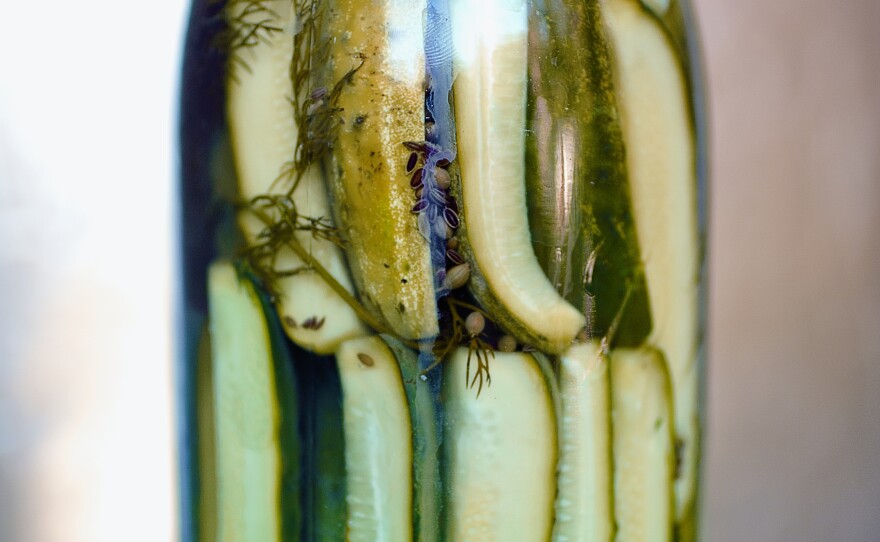Shopping at a farmers market on a weekend morning can turn bittersweet if your eye for just-picked summer fruit is bigger than your refrigerator and appetite.
That's a crisis first-time cookbook author Kevin West found himself in a few years back. After one particular farmers market spree, West's buyer's remorse came from a big package of fresh strawberries.
With too many delicious strawberries to eat, West turned to a family tradition: canning and preserving.
This old-school kitchen ritual is the topic of his book, Saving the Season: a cook's guide to home canning, preserving and pickling.
On a sunny and bright day in Washington, D.C., Weekend Edition guest host Lynn Neary hit the farmers market with West to find the right ingredients to preserve.
"With strawberries, I smell them first," West said. "They should have that rich nostalgic smell of strawberries. And if passes those two tests, look and smell, then we want to do a taste test."
The taste test might be the most important selection technique:
West is truly a canning evangelist.
"This is a real moment. It's a moment in the year, it's a moment in our lives," he said.
He says the time between spring and summer seasons can often bring the most rewarding preserved products later in the year.
"And that's part of what I mean by saving the season is you take this experience in the annual cycle ... and you put it in the jar. And six months from now we will re-experience that moment."
RECIPE: Basic Strawberry Jam
Yields 2 pints
2 pounds ripe strawberries
2 1/2 cups sugar
1 tablespoon freshly squeezed lemon juice
Optional: a few scrapings of lemon zest
To get started, go shopping at a farmers market or roadside farm stand if at all possible, and seek out the smallest, reddest berries. Fragrance is a good indicator of quality, but tasting is better still. The giant strawberries favored by supermarket produce managers are not a good choice. I call them "Pamela Anderson fruit," artificially enhanced and tasteless.
The sugar content in this recipe is lower than in many traditional farmhouse recipes, but there's still enough for a soft-set consistency and to ensure a reasonably long shelf life once opened. ...
Also, do not double the quantities, at least not initially. A small batch is cheaper, faster, more manageable, and better suited to the size of standard household equipment. If you want more jars, make two small batches. I can assure you from personal experience that you'll be happier with the outcome. In fact, the more experienced I get, the more I'm inclined to do three or four jars at a time — a nice little job to knock off in an hour, rather than a labor that wrings the fun out of the afternoon.

RECIPE: Cucumber Dill Spears And Chips
Yields 2 quarts
Processing your pickles in a hot-water bath rather than a boiling-water bath will give you a firmer texture. It follows that if you want pickles with real snap, don't process them at all. These dill-pickle spears — or sandwich chips, depending on how you slice them — can be processed, if you want, for long-term shelf storage, but first try making a batch to keep in the refrigerator. They will be crisp, and the flavor of raw cucumber comes through. It's the freshest-tasting pickle in this book, and perhaps my favorite. The recipe can be scaled up.
1/4 cup kosher salt
6 cups lukewarm water
2 teaspoons coriander seeds
1/2 teaspoon fennel seeds
3 large flowering dill heads (4 inches across)
3 pounds Kirby pickling cucumbers
4 cloves garlic, crushed
2 cups white-wine vinegar
Excerpted from Saving the Season by Kevin West. Copyright 2013 by Kevin West. Excerpted by permission of Knopf, a division of Random House Inc.
Copyright 2023 NPR. To see more, visit https://www.npr.org. 9(MDAzMjM2NDYzMDEyMzc1Njk5NjAxNzY3OQ001))







